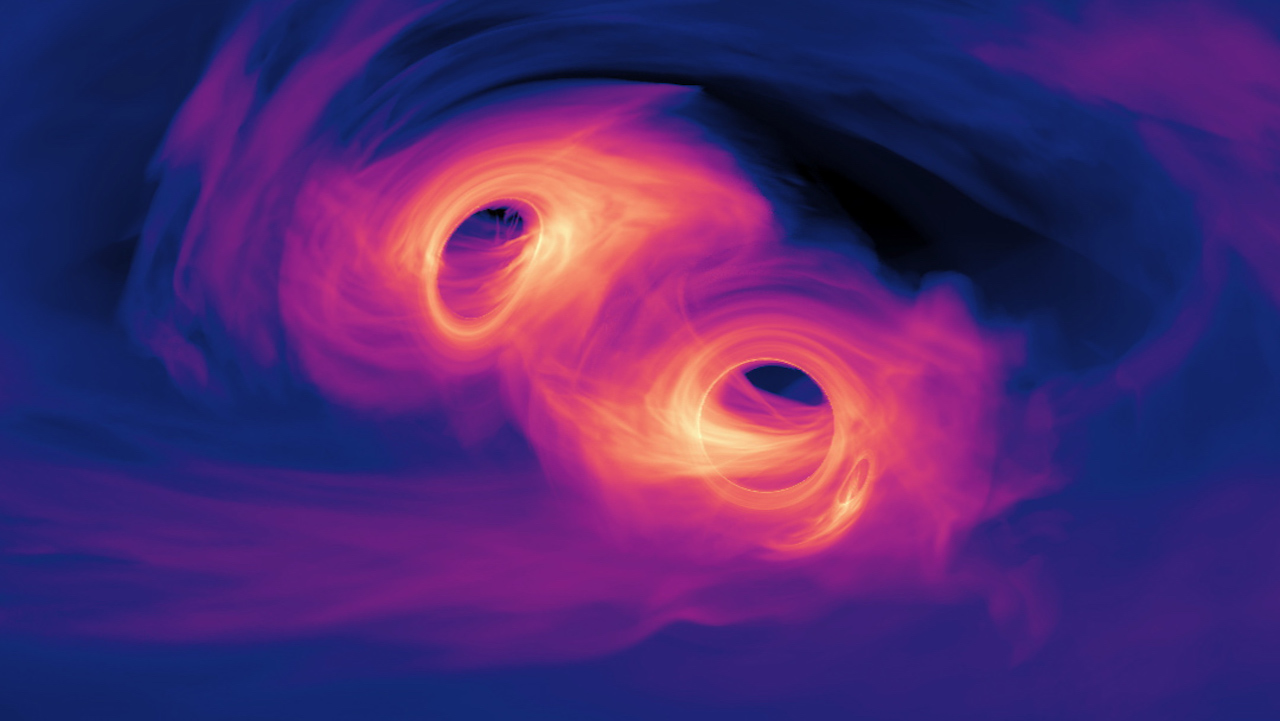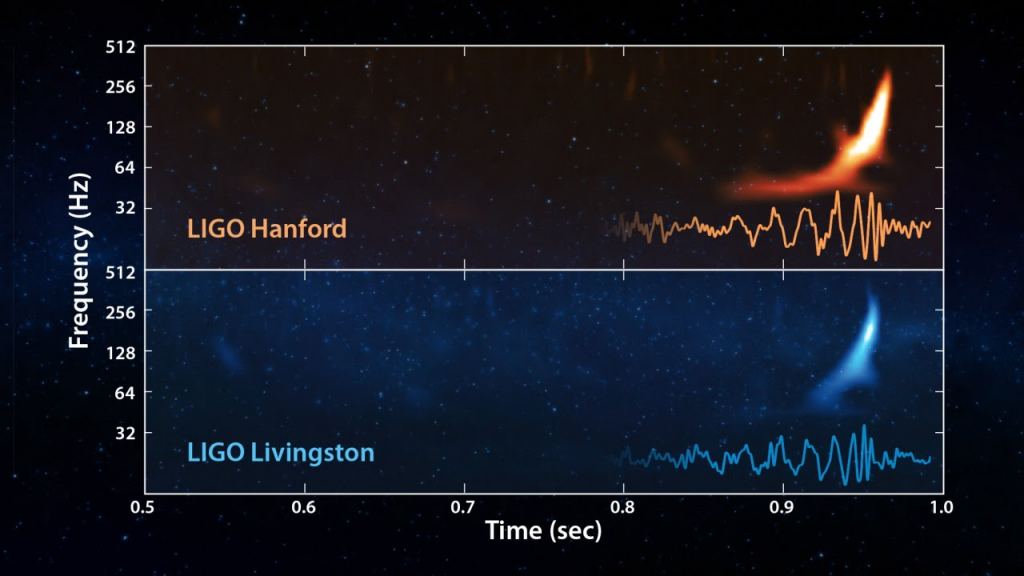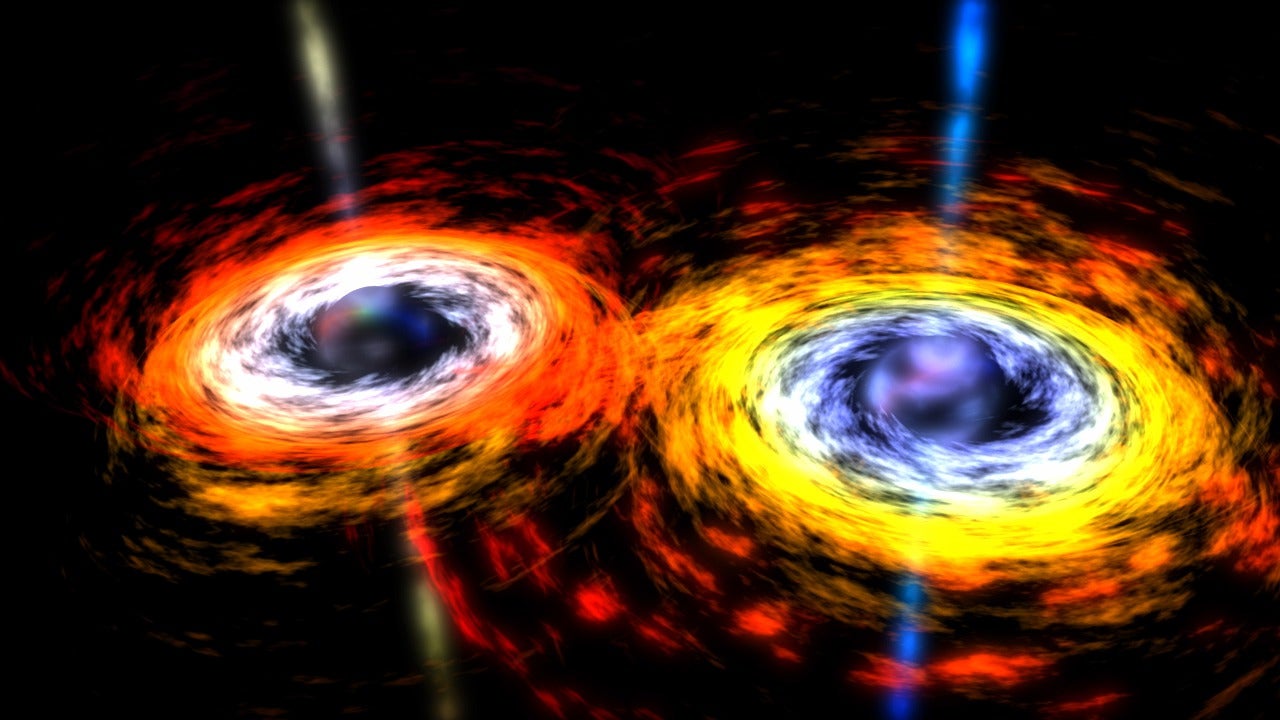Gravitational wave astronomy currently can only detect powerful rapid events, such as the mergers of neutron stars or stellar mass black holes. We’ve been very successful in detecting the mergers of stellar mass black holes, but a long-term goal is to detect the mergers of supermassive black holes.
While stellar mass black holes can be dozens of solar masses in size, supermassive black holes can be millions or billions of solar masses. This means the time frame for a supermassive black hole merger is not seconds, but years or decades. Rather than a quick chirp of gravitational waves, we observe with stellar mass mergers, the chirp of a supermassive merger is too slow for observatories such as LIGO to directly observe. Even the planned space-based LISA gravitational wave telescope would not be large enough to see one. The gravitational wavelengths would just be too long.

But a new paper published by the NANOGrav project shows how we might observe the mergers of supermassive black holes. Rather than proposing a giant gravitational wave observatory, NANOGrav has been studying the radio pulses of millisecond pulsars. These pulsars spin so quickly that they emit a pulse of radio light nearly a thousand times a second. Their pulses are so regular that they can be used as cosmic clocks.
For more than a decade, NANOGrav has observed the pulses of 45 millisecond pulsars, looking for small shifts in their timings. The idea is that as long-wavelength gravitational waves pass through space they will shift the pulsars slightly, which would shift the timing of the pulses we observe. By looking at the overall statistical shifts of lots of pulsars, we can detect the large-scale effect of the gravitational waves from merging supermassive black holes.

The gravitational chirp of a black hole merger. Credit: LIGO
It idea is not without its challenges. One reason is because of what is known as red noise. Although millisecond pulsars have very regular radio pulses, there is a small bit of variation to them. Neutron stars can have interior dynamics or thermal shifts that change the pulse rate. These shifts are common among pulsars, which means when you observe lots of them the background “red noise” can look like a gravitational wave shift.

In this study, the team looks at how gravitational wave effects can look like red noise at first glance, and how we might be able to distinguish red noise from real gravitational waves. The study doesn’t yet find any gravitational wave pulses but does put some upper constraints on gravitational wave observations. They are able to show that there has not been any billion-solar-mass black hole merger within 300 million light years.

With further observations, that constrain will tighten, which means they will be able to observe million-solar-mass black hole mergers in that range, or billion-solar-mass ones at greater distances. So it’s only a matter of time before they observe a galactic-scale merger, and expand gravitational wave astronomy out of the red noise.





